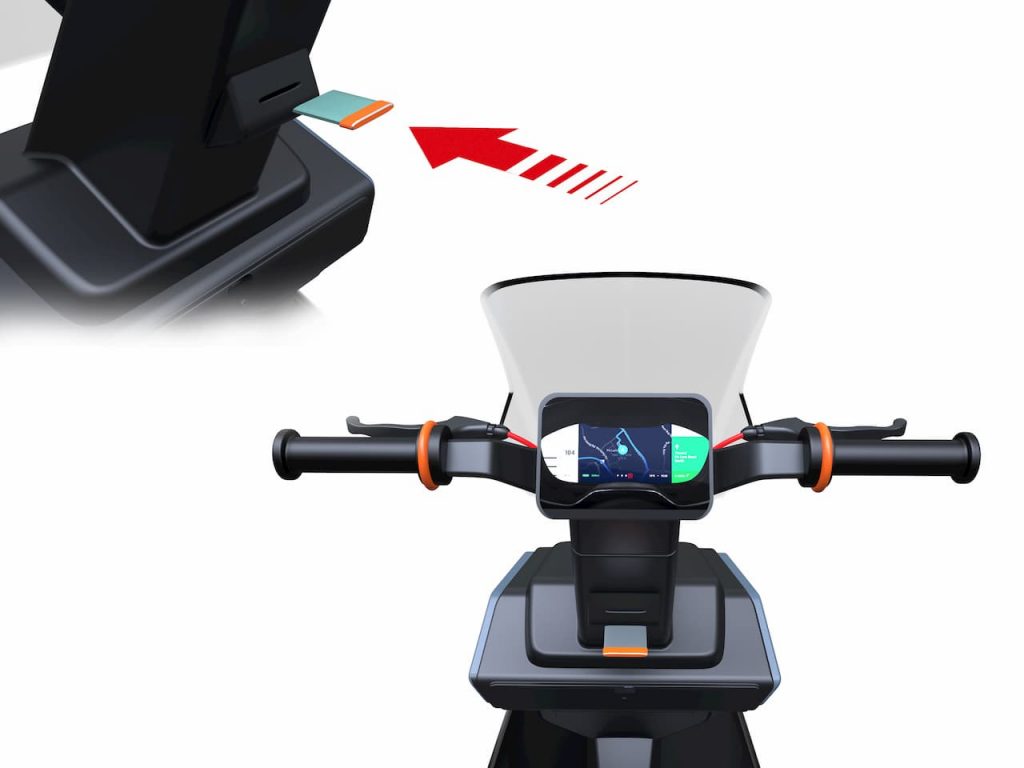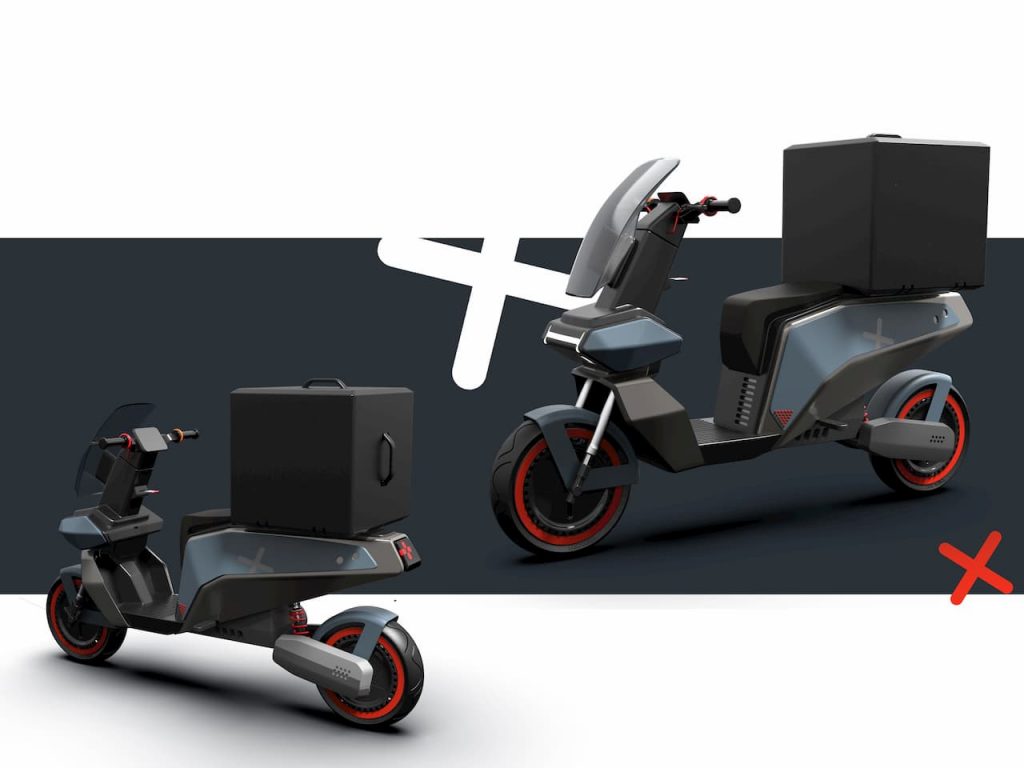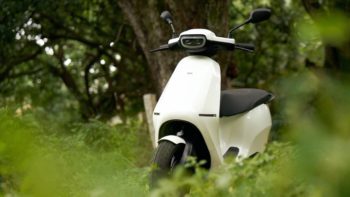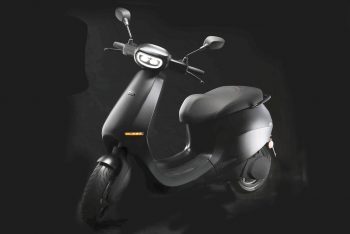23 year old Rugved Patil, an automobile engineer and transportation design student has rigged up an electric scooter he thinks ecommerce companies in the year 2030 would deploy to deliver food and groceries. Rugved, put off by the light and flimsy Chinese scooters that have flooded our market, designed a model that is tough, agile and versatile with panels that are both dominant and simplified that would be the ideal companion to the everyday challenges of the Indian delivery agent.
Here’s what Patil told us about the design project:
This was my thesis project. I was an intern at Advandes Design & engineering in Pune and the company told me to design a delivery scooter which is not too much into the future but close to our present models and it was an industry standard project.

I was told to design a delivery scooter which focuses well on the delivery aspect of the vehicle and it can also be used as a normal scooter which can be a family vehicle. So I thought of it as being a tough scooter which will meet delivery needs and has a strong utility. I went for a muscular structure of human chest and shoulder which have certain kinds of muscle (deltoid) and tried to capture that as my inspiration. I took it forward into the form of the scooter and it also inspired the side part or the shape of the vehicle.
The idea was to capture every kind of delivery need, and believe me there are various kinds of delivery needs such as milk, courier, logistics, food, laundry, etc so the scooter should be able to carry liquid and as well as some kind of cargo. I thought of all these demands and designed a railing that holds the container that can carry milk and other kinds of cargo. The other thing was the rack for the cargo purpose which can be used by the pizza delivery guy and it was designed to be the size of 20 by 20 inches. Finally I thought of also a seat variant where an individual seat can be attached instead of the box making it suitable to a wider variety of consumers.
Coming to connectivity, the scooter has a information card that holds the delivery instructions and data regarding the location so the agent can it as an information portal, displayed on the TFT screen.
I did some research on the battery and currently we have lithium ion batteries and there are certain issues with safety, and so my faculty advised me to go with the different chemistry. I used graphene batteries which is in development stage now and it has a good safety aspect to it, it is lighter and can be accommodated in a very small space and offers greater power and a range in the real world of 150 km. I went for a typical swingarm mounted motor instead of a hub motor and the tail lights were inspired from to the direction keys of a joystick of a video game. For weather protection riders can opt for a windshield or a visor.
I was told to design scooter for delivery that would become reality in 5 to 10 years so I would assume that this is what delivery agents would prefer to go about their job in the year 2030!






